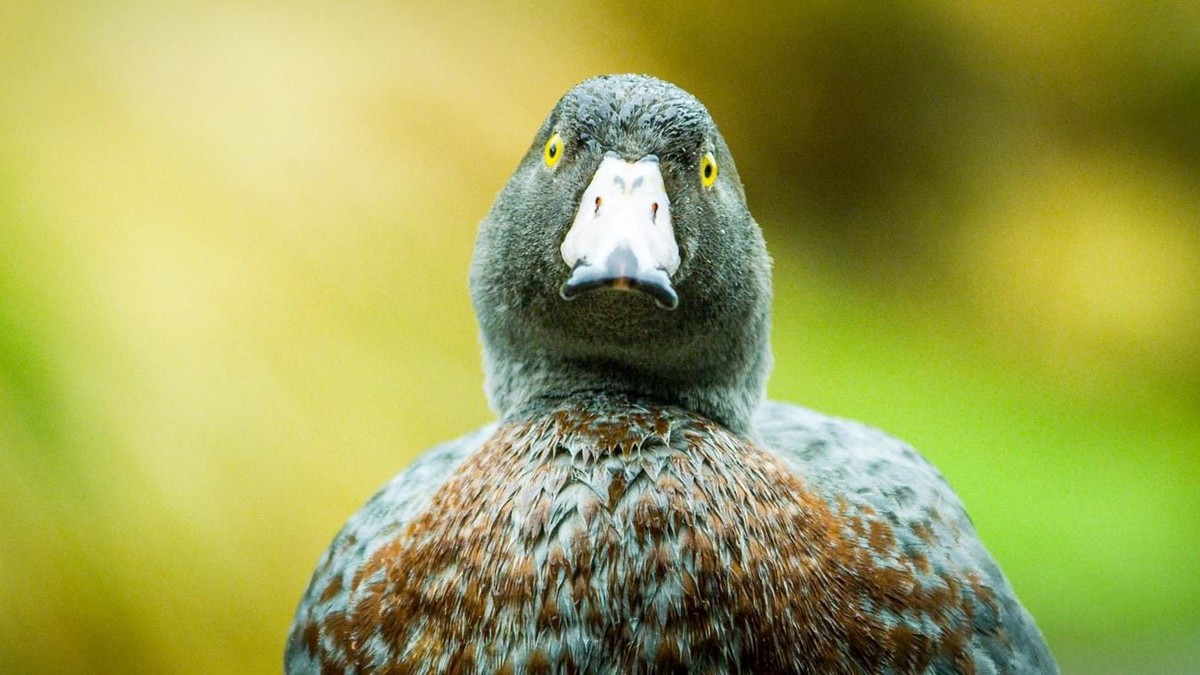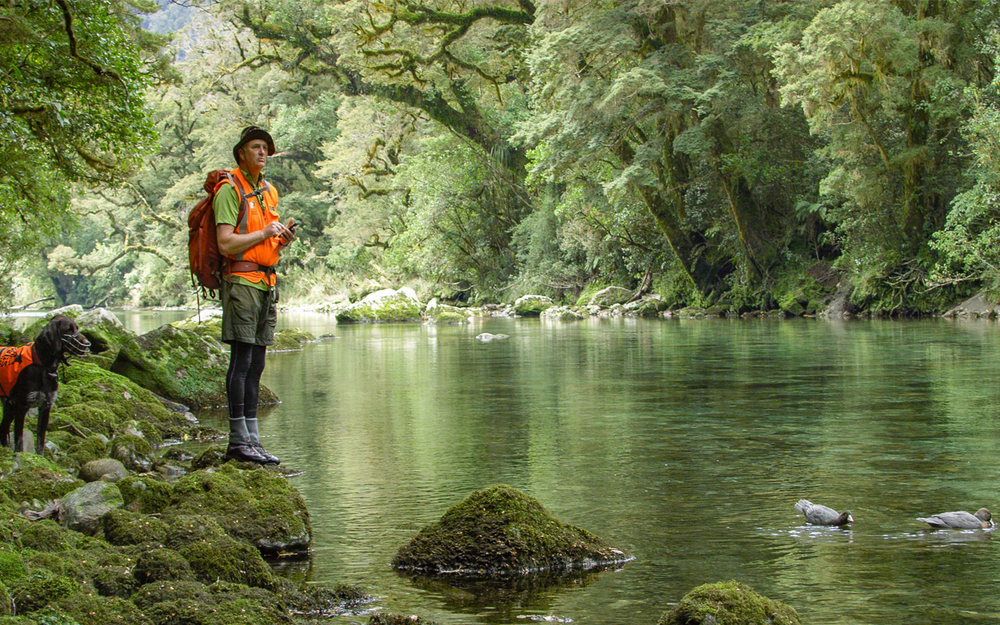Whio coming out of the woodwork
Marjorie Cook
14 August 2020, 4:46 PM
 Vulnerable duck has plenty of character, according to biodiversity ranger Max Smart. PHOTO: DOC/MAT GOODMAN
Vulnerable duck has plenty of character, according to biodiversity ranger Max Smart. PHOTO: DOC/MAT GOODMANThere are encouraging signs that Fiordland's whio population is continuing to grow, despite the February floods scouring out part of their habitat.
The whio, the bird on the $10 note, is a vulnerable species and the Department of Conservation’s 10-year goal is to get it onto the recovering species list.
DOC Fiordland senior ranger biodiversity Max Smart says he has high hopes that aspiration can be achieved.
Just 3000 whio, or blue duck, are estimated to live in the wild, but 10 years ago, the socially curious waterfowl were endangered.
“They are a really cool duck and they come up to you. They have quite a bit of character in that regard,’’ Mr Smart said.
This year’s Fiordland whio survey was not completed due to bad weather, and it was not initially clear how the birds had fared.
The survey work that could be done showed a drop of breeding pairs, particularly in the Arthur River.
“A couple of weeks ago I had another look in the Arthur [River] and suddenly, I found lots and lots of birds again. They have all come out of the woodwork,’’ Mr Smart said.

Whio dog Oska, with handler Max Smart, survey for whio. PHOTO: DOC/MAT GOODMAN
The national whio recovery programme has eight security sites – four in the North Island, and four in the South Island, including one in Northern Fiordland.
A whio survey in Fiordland in 2000 found just five breeding pairs and no ducklings.
A national whio recovery plan was produced in 2009 and twice a year for the last 10 years, DOC rangers and their whio dogs have surveyed the Worsley, Clinton, Arthur and Cleddau catchments and set up traplines to target predators.
Mr Smart said the plan's aspiration to find 50 breeding pairs at each security site had been achieved in Fiordland.
The 2018-19 summer was a very good breeding season – “probably would have been the best on record’’ – he said.
“Up until the summer of 2017-18, we were sitting at about 48 breeding pairs. Then in 2018-19, we had a huge leap to 74 pairs. Then last year, 2019-20, we found 58 pairs . . . Normally, we survey twice but we didn’t have the time or the resources to complete it this year.
“But even though we didn’t do as much, we still ended up with 104 ducklings. The best season, we had 107 ducklings in total, from walking all the rivers. The chances are this year could have been a record. It was only the second time we got over 100 ducklings,’’ Mr Smart said.
Predator traplines set along both side of rivers had helped bird populations recover but the biggest leap in population occurred when trapping was combined with an aerial 1080 operation, he said.
A new national 10-year recovery plan was now being drafted with goals to achieve more than 50 breeding pairs per security site.
“We met all our goals with the last recovery plan, early on. We were probably not as aspirational as we could have been, but we didn’t know we would be so successful,’’ he said.
Doc’s national whio recovery plan is supported by Air New Zealand and Genesis.
FOOD | DRINK
ACCOMMODATION



